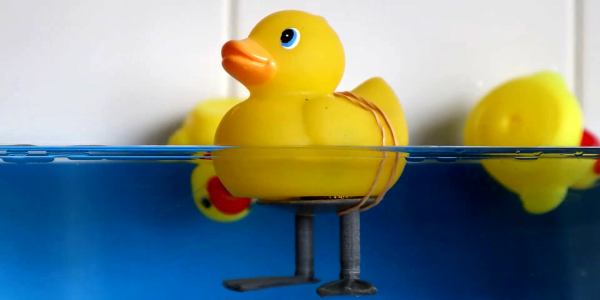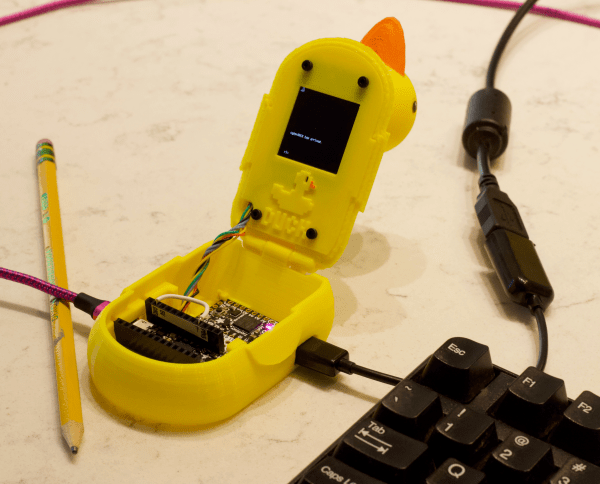Will someone please think of the rubber duckies?!
For decades they’ve been reduced to a laughing stock: a caricature of waterfowl. Left without a leg to stand on, their only option is to float around in the tub. And they don’t even do that well, lacking the feet that Mother Nature gave them, they capsize when confronted with the slightest ripple. But no more!

Due to the wonders of 3D printing, and painstaking design work by [Jan] from the Rubber Ducky Research Center, now you can print your own rubber ducky feet. We have the technology! Your ducks are no longer constrained to a life in the tub, but can roam free as nature intended. The video (embedded below) will certainly tug at your heartstrings.
OK, it’s a quick print and it made my son laugh.
The base and legs probably don’t fit your duck as-is, but it’s a simple matter to scale them up or down while slicing. (Picture me with calipers on the underside of a rubber ducky.) The legs were a tight press-fit into the body, so you might consider slimming them down a tiny bit when doing the scaling, but this probably depends on your printer tolerances.
It looks snazzy in gold-fleck PETG, and would probably work equally well for some more elaborate rubber duckies as well.














